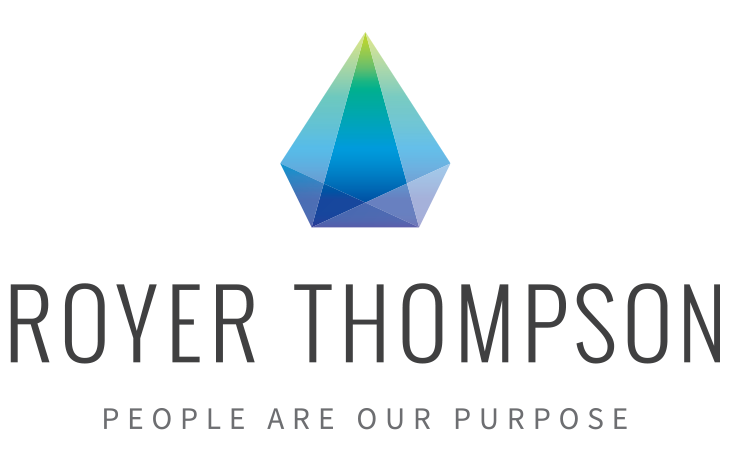
08 Aug Build Resilience in Your Organization
In today’s fast paced, ever-changing and highly competitive global market, CEO’s and Boards are paying attention to the health of their organizations and the vital importance of a resilient workforce. Andrew Zolli defines resilience as “the ability of people, communities, and systems to maintain their core purpose and integrity among unforeseen shocks and surprises.”
Leaders are required to be resilient and set the tone for creating such a culture. Juggling the competing priorities that come with leading an organization can be rewarding and energizing yet also mentally, physically and emotionally demanding. We often prioritize the ‘work’ over our own needs. While in the short term this seems productive, in the long term it can be detrimental, to you, and your organization. As referenced in our recently posted HBR article, Making of a Corporate Athlete, “chronic stress without recovery depletes energy reserves, leads to burnout and breakdown, and ultimately undermines performance.” One way to protect the health of your organization is to protect your own resilience by finding ways to recover mentally, physically and emotionally.
Below we offer proven methods to support your daily recovery, which, in turn, will have a positive impact on the resilience of the organization.
Mental Well-Being
Have you ever stayed late to get one more thing checked off your list only to make a mistake, or spend twice as much time on it, realizing a fresh head would have produced better results? Noticing the difference of a clear and focused versus mentally drained mind allows us to make decisions on when and how we use our mind throughout the day.
Create white space in your calendar: Shifting from doing to being is a key differentiator to how we show up as leaders. Being can look like creating time and space to think, reflect, realign, create, strategize or just be. What would shift if you took a moment between one meeting or activity to the next in order to set an intention and become present?
Mindfulness: While mindfulness has been a practice for years, it is now a much written about leadership topic for improving wellness and performance in the workplace. It can often be thought of as a time-consuming formal practice. Yet, it only requires a few moments with our breath and the space we are in.
What would change if you integrated a few moments each day to come back to yourself, bring awareness to how you feel and how it is impacting your mind, body and mood? How it is impacting those around you? This simple practice can shift our tone and energy and, in turn, that of our work environment.
Set boundaries and say no: We have a finite amount of time. While saying ‘no’ to an extra project may feel like we are letting our boss or organization down; saying ‘yes’ when we do not have the time and resources to do it well, can be counterproductive. What would happen if you became consistently thoughtful about your priorities and where you should be spending your time?
Physical Well-Being
We all know that sleep, water, nutrition, physical activity and outdoor time (time with nature is even better) play an important role in our physical well-being but it also has a direct impact on our emotional and mental wellbeing. It can be hard to consistently make healthy choices when we are pulled in multiple directions but may seem more attainable if we consider tweaking a few simple habits throughout the day.
Rest: We cannot persevere through the same task continuously for 8-10 hours straight. Working in breaks or changing our activities throughout the day will help provide the rest time our bodies need.We often feel like we do not have enough hours in the day to pack everything in, however incorporating breaks daily will improve our effectiveness, productivity, and ability to focus.
Fuel your body: Eat good food and drink water. Creating a culture where healthy consumption is the norm can really influence our choices. Simple tips include providing team water bottles; bringing healthy snacks to meetings (not your leftover Halloween candy!); ordering healthful lunches; and, not overdoing it at ‘happy hour’. Most importantly, leading by example with our own healthy choices will also impact those around us.
Get moving: Fitting some movement into our day can go a long way to enhancing our well-being. This can feel daunting especially if we put pressure on ourselves to stick to a training program or get to a gym.
Get some Vitamin ‘N’ (Nature): What difference would a fifteen-minute break outside make to your mindset? Getting out of the office, away from the computer, or taking a fresh outdoor break between meetings can improve our energy and focus when we return to the office. This will have a grounding and positive effect on mental acuity, creativity
Emotional Well-Being
Knowing our values, having
Connect your work to your values: Reflecting on the meaning of our work and living our values can restore our sense of purpose and enhance resilience. When values are not in alignment it can deplete us and cause burnout, hence become harmful to the health of the organization. What values are non-negotiable for you and how do you feel when they are not in alignment? What do you notice about the value alignment in your organization?
Lean on your people: Having a few trusted allies at work can go a long way in helping you cope with the emotional demands of leadership. In fact, research suggests having a ‘work spouse’ (a close platonic relationship with a colleague) can help manage stress, prevent burnout and increase productivity at work.
Who do you connect with at work? What is the social culture of your organization? Connection both professionally and socially can support the emotional restoration needed during those busy or stressful workdays.
Make time to pursue your passions. Make time for the other things, outside of work, that fulfill you or bring you joy. Volunteer, play an instrument, spend time with loved ones. All of this will help you feel more fulfilled and in balance. It also provides you with a higher purpose and brings perspective and gratitude. What opportunities do you provide yourself and your employees to pursue their passions?
A final quote from the earlier referenced HBD article The Making of a Corporate Athlete captures the overarching message that recovery matters, “High performance depends as much on how people renew and recover energy as on how they expend it, on how they manage their lives as much as on how they manage their work. When people feel strong and resilient—physically, mentally, emotionally, and spiritually—they perform better, with more passion, for longer. They win, their families win, and the corporations that employ them win.”

Senior Director
Org. Performance & Career Transition
P. (902) 422-2099 (ext 223)
E. apenney@royerthompson.com

